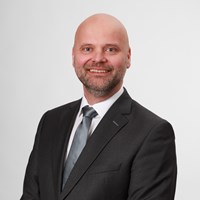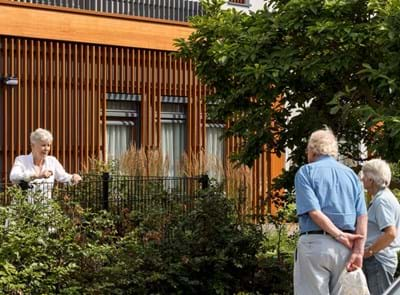- Home EN
- News
- Latest news
- 2021
- Why senior housing is a key ESG strategy
Why senior housing is a key ESG strategy
The sector offers stable financial returns and allows investors to deliver social returns, as they contribute to a high-quality living environment for the elderly, according to Bouwinvest’s Erwin Drenth.

With demand for senior housing and healthcare real estate set to increase in the years ahead, a growing number of investors that look to implement ESG strategies across their portfolios are increasingly targeting this sector, Erwin Drenth, Director of Dutch Healthcare Investments at Dutch real estate investment manager Bouwinvest Real Estate Investors, tells PERE.
Demand for senior housing and healthcare property has been growing due to structural changes in demographics. Will this continue post-covid?
Yes, it will continue. In the Netherlands, and in other countries, we see a large increase in demand. I don’t want to neglect all the effects of the pandemic but, statistically, the effects are short term and almost comparable to the flu epidemic we had in 2017. It has a minor influence on the demographic development we expect to see play out over the next 20 years.
The healthcare real estate investment market started about 15 years ago in the Netherlands with the luxury apartments segment – villas with personalized care and a hotel-like service concept. This high-end market is more or less saturated now, and the major developments are targeting mainly the mid and lower segments – the mid-rental segment in the Netherlands for healthcare is between €800 and €1,050 per month for independent and assisted living.
The Netherlands needs an additional 100,000 homes for seniors in this space, as well as 60,000 extra places for people with severe dementia, for example, in nursing homes over the next 10 years. This is because of the demographic trends involving not only the meetings, and to make sure they get to know each other.
And then, in some assets, we use apps to get people to contact each other to see what activities there are in other buildings, for instance. Technology is important, but a message board where you pin a weekly announcement still works. You just have to adapt to the local situation and the tenant.

As investors increasingly look to implement ESG goals within their portfolios, do you anticipate increasing interest in senior housing going forward?
This is quite an interesting market. Initial yields have decreased by almost 2 percentage points in the last three or four years. So that’s quite steep. In the Netherlands, for instance, there are many more international players. We’ve seen an increase in competition, which clearly indicates how attractive this market is.
We’ve also noticed interest from investors for our Dutch Healthcare Fund. Right now, we invest exclusively for the Dutch construction sector pension fund bpfBOUW through our debut fund. The Dutch construction sector pension fund has the ambition to double commitments to our fund, which is about €450 million in size now. This shows how investors believe they can realize impact while also meeting their financial and social targets. Therefore, we’re planning to increase investment in this market to €600 million in 2022 and more than €1 billion in the subsequent five years.
Which financial and social returns make this sector attractive to investors?
For all investors – especially institutional investors like pension funds – that want to realize impact both socially and financially, this sector is quite interesting because of the huge demand we see for senior housing and healthcare real estate.
With rents in the mid-segment, occupancy rates are high. For the long term, we predict returns to be between 5.5 to 7 percent, which is still above residential real estate, although that depends, of course, on the segment you’re in. We do what we call assisted living, where people still live independently with a community concept, which is more in line with residential performance. But we also focus on nursing homes, which have a somewhat higher-return profile.
Social returns are more difficult to measure, but we have started actively measuring the satisfaction of our tenants with regard to our community concept. And our hosts have provided extremely high ratings – about 8.4 out of 10, according to our surveys. In that respect, we see some sort of social return in a measurable way.
Another way of looking at it is that we see many people engaging in activities that are organized within the community concept. Of course, measuring loneliness is quite difficult because it’s a subjective experience, but like I mentioned before, there are still ways through which you can identify the social return for these assets.
What are the main challenges you see in the sector today?
In the Netherlands, the number one issue in the healthcare sector in general is the lack of personnel. But, going forward, I think we will find solutions to that. Technology, for instance, will help. And also more new housing concepts that foster a culture where people look after each other more.
Regarding real estate, the challenge is, of course, defining the correct location. But more than that, it’s to make the local government realize how big demand is for this sector and will be in the future, so they can take some measures and designate areas for senior living or for nursing homes.
We have quite a few initiatives in the Netherlands, initiated by both the national government and our branch organizations, to make local authorities more aware of the incredible need and demand for senior housing. Initiatives where all parties involved speak with each other, understand each other, and learn from successful cases will absolutely take this market a giant step further.
An example where we found a good collaboration was a recent project we started in the Dutch city of Gouda. There, the municipality said they could designate an area for elderly people. The project had to have a common space for people to meet and had to have space for a local healthcare operator as a base to deliver care in the building. And finally, we made agreements with the municipality for a target group at a certain rental level. In return for these demands, they gave a discount on the land price, which made the project possible.
That is a good example of how everyone can compromise to provide housing for elderly people.

